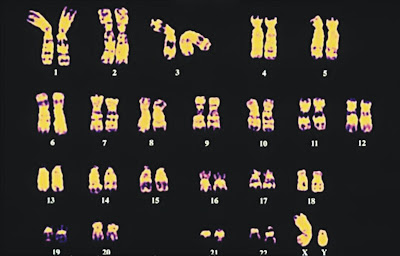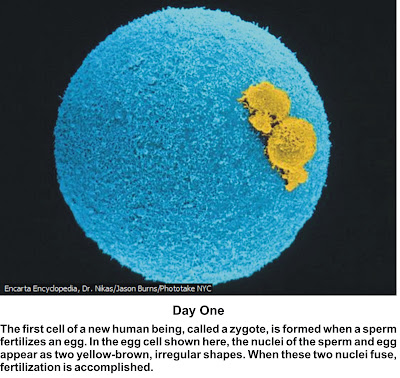Chromosomes and Gender-Induced Danger and Solution
Just like the blog’s name http://ChromosomeBabyGenderDetermination.blogspot.com/, the chromosomes in the man’s sperm cell and woman’s egg cell play an important role in the choice of a baby gender. The same way the gender of a baby can unite a family, it can also play a destabilizing role in a family’s existence.
It is an irony of life that a lot of home had been scattered for one reason only: the wife cannot give birth to the desired gender, either a boy or a girl. For this simple reason, especially over the woman’s inability to give birth to a son, the usual blooming homes have undecidedly turned bloomless and split up, spouses have gone apart, brewing love affairs have become chilled and stone cold, husband and wife who used to be the best of friends have suddenly become antagonists, once blooming romance have gone sour and tasteless, sweethearts and honeys have suddenly become “bitter-hearts”, the once-happy husband and wife have become divorced as a result of the couple’s incapability to produce the right gender by having a male child, a son, an heir or a female child, a daughter, an heiress!!!

When the expected baby gender did not materialize, the couples often feel frustrated, angry, depressed and disappointed. At this point, the level of their understanding for each other and their prevailing problems become so low and what happens next? They started throwing missiles of blames at each other.
Despite all these episodes mentioned above, the couples rarely take time to make a research on what is responsible for their present baby-gender selection predicament, yet it is a problem with a very simple solution which entails natural baby gender selection system i.e. you choose the sex of your baby by naturally studying your body systems and undergoing some natural diet habit and recommended steps which will eventually end up in the desired baby gender.
It should be noted that in this information age, it is practically easy for the couple to make a research on the information hyper-space (i.e. the Internet) and follow the steps in picking the gender of their baby, get pregnant quickly and give birth to bouncing children of their desired gender.
Hence, what the couple should do is to to learn how to select the gender of their baby through natural means:
• without applying some so-called gender-inducing drugs,
• without any form of surgery (risky or non-risky),
• without any type of gender-inducing treatments or otherwise, and
• without any side effects whatsoever,
One thing must be born in the mind of the couple; this is the fact that the father as well as the mother also plays some role in determining the gender of the baby.
The man’s sperm contain XY chromosomes; simply put, one X chromosome and one Y chromosome while the woman’s egg (ovum) contain XX chromosomes; simply put, two X chromosomes.
So if any of woman’s X two chromosomes (from the egg) unite with man’s X chromosome from the sperm cell, a female gender (GIRL) is the result.
Alternatively, if any of woman’s X two chromosomes (from the egg) unite with man’s Y chromosome from the sperm cell, a male gender (BOY) is the outcome.
So, whichever way you put it, the XY chromosomes in the man’s sperm determine the gender of the baby.
Firstly, during the periodic cycle of a woman which often lasts for about 28 days (in some women, it is as far as 31 days), some specific days in woman's fertility cycle are specifically for conceiving a male gender (BOY) only while some days are specifically for conceiving a female gender (GIRL).
Simply put, in some days if the male sperm come in contact with a female egg and fertilize it, a male gender (BOY) results and in some days during the woman’s periodic cycle, the union of the man’s sperm and woman’s egg (ovum) result in a female gender (GIRL).

Secondly, the vaginal environment (tract) of the mother-to-be could be too acidic or too alkaline. This will simply "kill" the Y chromosome [i.e. "Y" sperm (BOY)] or the X chromosome [i.e. "X" sperm (GIRL)]. The Y chromosome in the XY chromosomes of the sperm cell forms the male gender (boy) while the X chromosome in the sperm cell forms the female gender (girl).
During the process of selecting your baby's gender, acidity level of female’s reproductive tract will make a lot of difference. It is possible for a mother-to-be’s tract to be either too acidic or too alkaline and this will definitely result in failure in conceiving the desired gender.
POSER
So, how do a father-to-be control the fusion of the man’s sperm chromosomes and the woman’s egg chromosomes to produce the desired baby gender (BOY or GIRL)?
How do you adjust your vaginal environment, if you are naturally acidic or alkaline (i.e. adjust your PH level to create the ideal environment for "Y" sperm or "X" sperm), in order to conceive the desired gender?
However, note that the aberration in a woman's acidic or alkaline level can be controlled by some healthy guide. One of the best bet is through this link.










